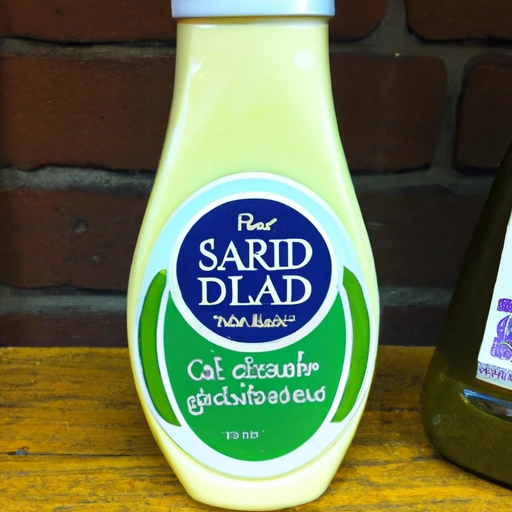Salad Dressing
Description

Salad dressing is a liquid or semi-liquid condiment used to add flavor and moisture to salads. It can range from simple oil and vinegar mixtures to complex emulsions like Caesar or ranch. Dressings are often made by combining an acid such as vinegar or lemon juice with oil and various herbs, spices, and other flavorings. Depending on the type of salad dressing, it may also include ingredients like buttermilk, mayonnaise, yogurt, or sour cream. Dressings are typically used in both home cooking and restaurant dishes, and come in countless varieties, each bringing its unique taste and texture to a salad.
Common uses
Salad dressings are most commonly used to add flavor and moisture to leafy green salads, vegetable salads, and grain salads. They are also used as marinades for meats, as dips for vegetables and appetizers, and as a flavorful addition to sandwiches and wraps.
Nutritional value
Calories
Caloric content varies widely among salad dressings, with creamy dressings typically having more calories than oil-based vinaigrettes. For instance, 2 tablespoons (about 30 ml or 1 fl oz) of ranch dressing can contain around 140 calories.
Protein
Salad dressings generally have minimal protein content unless they contain ingredients like cheese or yogurt.
Fat
The fat content in salad dressings can range from high in creamy dressings, due to ingredients like oils, mayonnaise, or cream, to lower in fat-free or reduced-fat varieties. The type of fat also varies, with some dressings containing healthier unsaturated fats from olive oil, while others may contain saturated fats.
Carbohydrates
Carbohydrates in salad dressings are usually present in small amounts and come from sugars or ingredients such as honey, fruit juices, or added sweeteners. Dressings like French or sweet and sour may have higher sugar content.
Vitamins
Some dressings can be sources of vitamins, such as vitamin C in citrus-based dressings or vitamin K in those with a high content of olive oil.
Minerals
Depending on their ingredients, some dressings may contain minerals like calcium in buttermilk or cheese-based dressings or potassium in those made with fruit juices.
Health benefits
Salad dressings can contribute to a healthy diet when chosen carefully and used in moderation. Dressings made with olive oil, for example, can provide heart-healthy monounsaturated fats, while those with vinegar or lemon juice can have digestive and antimicrobial properties.
Potential risks
High-calorie, high-fat dressings can lead to weight gain if consumed in large quantities. Some dressings may also be high in sodium and added sugars, which can pose health risks when consumed excessively. Individuals with allergies should also be mindful of dressings containing allergens like dairy, nuts, or soy.
Common recipes
Salad dressings are a key component in recipes such as Caesar salad, Cobb salad, and garden salads. They are also used in pasta salads, potato salads, and coleslaws.
Cooking methods
While salad dressings are typically used raw, they can also be included in cooked dishes. For example, some dressings are used to glaze or baste meats during roasting or grilling.
Pairing with other ingredients
Dressings are often paired with specific salads to complement the ingredients. For example, a balsamic vinaigrette may pair well with a spinach and strawberry salad, while a creamy blue cheese dressing is commonly used with a wedge salad.
Summary
Salad dressing is a versatile and essential ingredient in various cuisines, enhancing the flavor and texture of many dishes. With a wide range of types available, from light vinaigrettes to rich and creamy options, salad dressings can be tailored to complement any salad or dish. When chosen wisely, they can also offer nutritional benefits, though mindful consumption is key to avoiding potential health risks.